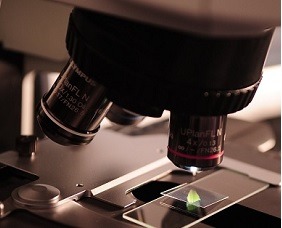The first step toward understanding how the prostate affects your health is to learn what the prostate is and how it functions.
Location of the prostate gland
The prostate gland is about the size of a walnut. The prostate gland surrounds the neck of a man’s bladder and urethra – the tube that carries urine from the bladder. It is partly muscular and partly glandular, with ducts opening into the prostatic portion of the urethra.
It is made up of three lobes: a center lobe with one lobe on each side.
Prostate functions – The roles you did not know about
The main function of the prostate gland is the secretion of alkaline fluid that adds to the bulk of the semen.
Semen is a mixture of fluid from three accessory male sex glands i.e. seminal vesicles, bulbourethral, and prostate; semen is discharged during ejaculation in men and contains sperms.
The prostate gland makes up an important component of the human male reproductive system.
Another prostate gland function is that it regulates hormones and urine flow. The prostate needs androgens, such as testosterone, to function correctly. It contains the 5-alpha-reductase which converts testosterone in DHT. This hormone is essential in developing other male characteristics, such as facial hair.
So let’s take a deeper look at this gland with some facts you’re likely not familiar with.
9 Facts About The Prostate Gland
1. The prostate boosts your sexual capability
Prostate gland secretions comprise a large portion of seminal fluid and proper function of the gland is crucial to sexual capability in men.
The prostate contributes around 20-30% to the total seminal volume. The prostatic fluid contains substances that allow the sperm cells to live. One of these substances is the PSA, which makes the semen more fluid. This prostate role ensures that the sperm cells survive until it encounters an ovary to form an egg-cell.
2. Your prostate has four areas
The prostate gland contains four areas, or zones.
The peripheral zone is the largest segment, containing about 75% of the glands in the prostate. Most prostate cancer occurs in the peripheral zone and is the site where most needle biopsies are taken. The peripheral zone contains the majority of the prostatic tissue.
The central zone of the prostate gland is the area that surrounds the ejaculatory ducts. Less than 5% of prostate cancers originate here. However, if prostate cancer does originate here, it is more aggressive and can metastasize to the seminal vesicles.
The transition zone surrounds the urethra in the place where it enters the prostate. This part of the prostate grows in adult men and is responsible for BPH, or the enlarged prostate. Around 20% of cancers originate here.
The fourth zone is the anterior fibromuscular storma.
3. The prostate gland is fueled by testosterone
The prostate gland is dependent on testosterone for it to function.
Testosterone is produced in a man’s testes. Testosterone helps maintain sperm production, sex drive, and many more. Also, researchers have found a connection between high levels of testosterone and prostate cancer. However, it is important to keep the prostate healthy to enjoy pleasant sex life.
4. The prostate gland is hugging your urethra as we speak
It completely surrounds the urethra, which is the tube that takes urine and sexual fluids through the penis and out of the body.
The prostate is located underneath the bladder and when a man ages it can cause urinary issues, such as incontinence.
5. It’s another muscle that needs work
The prostate gland contains muscles that help in expelling the semen out of the penis during sexual intercourse. The prostate is a muscle-driven mechanism between urination and ejaculation.
This gland works by expelling the seminal fluid through a contraction. The semen is then forced outside and the ejaculation takes place.
6. The prostate produces seminal fluid
Semen is produced by both the prostate gland and the seminal vesicles, a pair of glands attached to the prostate.
The fluid produced by the prostate gland mixes with the sperm and produces semen. During sex, the muscles of the prostate contract and ejaculate the prostate fluid and sperm into the urethra.
7. It spares you of some awkward leakage
The prostate gland is also responsible for sealing off the entry from the bladder into the urethra with the help of a muscle called a sphincter. This prevents the flow of urine during sexual intercourse.
8. It’s the size of a walnut
A normal prostate gland is approximately 1½ inches long and weighs about an ounce.
9. It keeps out the bad stuff
The prostate also filters and removes toxins for the protection of the sperm, which enhances the chance of impregnation and ensures that men seed with the optimum quality of sperm.
Related: Concerned about possible prostate cancer symptoms? Learn more about treatments and SMART Robotic Prostate Surgery in NY.



